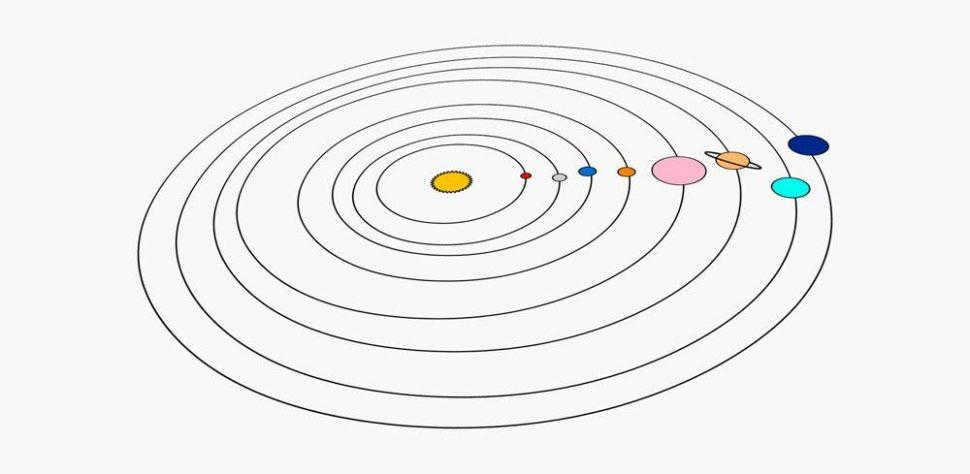
Typically, the common belief is that planets move in circular orbits around the sun. However, this is not entirely accurate. In the early 17th century, Johannes Kepler studied the data collected from observations of Mars and determined that its orbit is actually in the shape of an ellipse, which can be thought of as an oval. An ellipse has two focal points, with the star being located at one of them. As time went on, further observations confirmed that all the planets in the solar system, as well as other celestial bodies like asteroids and dwarf planets, also follow elliptical orbits around the Sun. Additionally, the moons of the planets also travel in elliptical trajectories around their respective planets.
Due to its shape, the distance between the Sun and each planet changes over time. The farthest point from the star on the orbit is called aphelion, while the closest point to the star is known as perihelion.
It’s important to note that a circle is a special type of ellipse. There is a specific measure called eccentricity that indicates how similar an ellipse is to a circle. If the eccentricity is zero, the ellipse is a perfect circle. However, as the eccentricity approaches one, the ellipse becomes more elongated. For instance, the distance between the Earth and the Sun varies from 147 million km at perihelion to 152 million km at aphelion, and the eccentricity of Earth’s orbit is 0.017. Mercury has the highest eccentricity, which is 0.206, and its orbital radius ranges from 46 to 70 million km.
Indeed, the ellipticity of the planet’s orbit can be mathematically proven by applying Newton’s laws and considering the gravitational interactions between the Sun and the planet. However, when we factor in the gravitational interactions between multiple planets, the shape of the orbits will deviate from the perfect ellipse! These deviations, known as perturbations, prevent us from calculating the orbits with absolute precision. As a result, astronomers cannot predict the exact position of Pluto in the sky 20 million years from now, although they can make accurate forecasts for several millennia ahead.
Sources:
The sun is orbited by planets in circular orbits

The greater the distance of the planets from the Sun, the higher their linear and angular speeds as they orbit around the Sun. The duration of a planet’s revolution around the Sun in relation to the stars is known as its sidereal period.
This length of time for the Earth to complete one revolution relative to the stars is referred to as a stellar year. Mercury has the shortest stellar period, while Mars takes approximately 2 years, Jupiter takes 12 years, and as the distance from the Sun increases, Pluto’s stellar period reaches 250 years.
The credit for discovering the laws of planetary motion goes to the renowned Austrian scientist Kepler. In the early 17th century, Kepler established three laws of planetary motion, now known as Kepler’s laws.
Kepler’s first law states that each planet orbits the Sun on an ellipse with the Sun at one of its foci.
The point at which an orbit is closest to the Sun is known as perihelion, while the point farthest from it is called aphelion. Planetary orbits are generally elliptical in shape, resembling circles with small eccentricities. For instance, the Earth’s orbit has an eccentricity of e = 0.017.
Cometary orbits, on the other hand, have eccentricities that approach unity. When e = 1, the second focus of the ellipse is infinitely far away, transforming the ellipse into an open curve known as a parabola. At infinity, the branches of the parabola become parallel. When e > 1, the orbit becomes a hyperbola. Along a parabola or hyperbola, a celestial body completes only one orbit around the Sun before moving away from it indefinitely.
Kepler made the discovery of his laws through the examination of the periodic revolution of the planets encompassing the Sun. Newton, building upon Kepler’s laws, made the discovery of the law of universal gravitation. He determined that bodies, under the influence of mutual gravitation, have the ability to move in relation to one another on an ellipse, including a circle, a parabola, and a hyperbola. It was revealed that certain comets orbit the Sun, moving along a parabola or hyperbola. In such cases, they depart from the solar system and are no longer part of it.
The Earth’s average orbital velocity is 30 kilometers per second. The Earth’s orbit is near circular, and the Earth’s orbital velocity is nearly circular at the Earth’s distance from the Sun. The parabolic velocity for the Earth would be √2*30 km/s = 42 km/s. At this velocity in relation to the Sun, the object will exit the solar system.
Kepler’s Third Law states that the stellar periods of the planets’ orbits are related to the cubes of the major semi-axes of their orbits.
Law of Kepler

This article is currently being reviewed by Skysmart methodologists.
If you happen to notice any errors, please report them via the online chat
(located in the bottom right corner of the screen).
The Earth’s Shape
It is difficult for us to fathom now that there was a time when people believed the Earth to be flat. The ancient Greeks, for instance, imagined it as a plane suspended in the air and surrounded by glaciers. In India, they thought the planet was supported by three elephants standing on a tortoise. Although there are still some who hold these beliefs, there is an abundance of evidence to signify that our planet is not actually flat. Here are a couple of examples to help keep the conversation going.
Gravity
Gravity exerts a force that pulls all objects towards the center of mass. The Earth is a spherical shape, and its center of mass is located at its center.
Regardless of their location, gravity always pulls objects on the Earth’s surface towards its core, causing them to move downward – this is what we consistently observe.
However, if we were to imagine that the Earth is flat, gravity would need to pull everything on the surface towards the center of the plane. In this scenario, if you were positioned at the edge of a flat Earth, gravity would pull you towards the center of the disk, rather than downwards.
In order to support their claim, advocates of the flat Earth theory would need to find a location on the planet where objects fall sideways instead of downwards.
If the Earth was actually flat, with elephants and a turtle supporting it, we would observe a different pattern during a lunar eclipse, rather than a shadow that gradually increases in size:
However, it is highly likely that this scenario is quite different from the actual reality.
On a flat Earth, sunlight would behave similarly to the way it does from a flashlight. This means that tall objects located in the opposite direction of the Sun would remain in shadow even after sunset.
Conversely, on a spherical Earth, skyscrapers and mountains would still be illuminated by the Sun after sunset or before dawn.
This is precisely what you would witness if you were to experience a sunrise or sunset in the mountains, or if you were to examine photographs of such events.
Alright, so it is now clear that the Earth is not flat – that matter has been resolved. However, it would also be incorrect to describe the Earth as a perfect sphere: it actually has the shape of an ellipsoid.
An ellipsoid is a compressed sphere with an elliptical cross-section. All satellites rotate along an elliptical path.
Ellipse
An ellipse is a closed curve in a plane, a special form of an oval. An ellipse possesses two axes of symmetry – horizontal and vertical, which are composed of two semi-axes.
An ellipse also has two focal points, which are points where the sum of distances from any point P(x,y) is constant.
F1 and F2 – foci
c – half the distance between F1 and F2
a – major semi-axis
b – minor semi-major axis
Now that we have a clear understanding of the necessary concepts, we can delve into the meaning behind Kepler’s laws.
If you’re interested in learning more about physics, consider enrolling in the USE physics preparation courses at Skysmart online school. Our experienced teachers will guide you through the subject.
Kepler’s First Law
According to Kepler’s first law, each planet in the solar system follows an elliptical orbit with the Sun at one of its focal points.
The Sun occupies one of the foci of the ellipse. The point B on the orbit that is closest to the Sun is referred to as the perihelion, while the point A, which is farthest from the Sun, is known as the aphelion.
Kepler’s first law is relatively straightforward, yet significant, as it significantly propelled the field of astronomy during its time. Prior to this breakthrough, astronomers held the belief that planets solely followed circular orbits. In the event that observations conflicted with this notion, scientists would incorporate additional small circles that the planets traced around the main circular orbit points. Kepler was fortunate to have access to Tycho Brahe’s extensive collection of observations and, through careful examination, surpassed previous conceptions.
Kepler’s second law (the law of areas)
The planet’s radius-vector covers equal areas in equal time intervals.
Each planet orbits in a plane that passes through the center of the Sun. Simultaneously, the radius-vector connecting the Sun and the planet covers equal areas. As a result, celestial bodies move at different speeds around the Sun: they reach maximum velocity at perihelion and minimum velocity at aphelion.
This phenomenon is observable in the movement of the Earth. Every year, in early January, our planet reaches perihelion and accelerates. Consequently, the Sun’s movement along the ecliptic is also faster during this time of the year compared to other periods. In early July, the Earth reaches aphelion, causing the Sun to move slower along the ecliptic. As a result, daylight hours are longer in summer than in winter.
Kepler’s Third Law
The relationship between the squares of the orbital periods of the planets and the cubes of the major semi-axes of their orbits is known as Kepler’s Third Law.
Kepler’s third law establishes a connection between the orbital periods of planets or satellites and their average distance from the Sun. This law holds true for both planets and satellites, with an error margin of less than 1%.
Kepler’s Third Law
T1 and T2 represent the orbital periods of two planets [c]
a1 and a2 denote the major semi-axes of the planets’ orbits [m]
By utilizing this principle, we have the ability to determine the duration of a year (the time it takes for a complete orbit around the Sun) for any given planet, provided we have knowledge of its distance from the Sun.
Conversely, it is also possible to calculate the orbit by knowing the period of revolution.
Principle of Universal Gravitation
Kepler’s laws are a result of observations and generalizations. They were theoretically validated by Isaac Newton in the principle of universal gravitation, which states that all objects are attracted to each other. The force of universal gravitation is directly proportional to the product of the masses of the objects and inversely proportional to the square of the distance between them.
The formula for the force of gravitation, according to this principle, can be expressed as:
Principle of Universal Gravitation
F – gravitational force [N]
M – the mass of the first object (typically a planet) [kg]
m – the mass of the second object [kg]
R – the distance between the objects [m]
G – the gravitational constant
G = 6.67 × 10-11 m3 kg-1 s-2
Newton was the first scientist to propose that gravitational forces exist between any objects in space, and it is these forces that determine the nature of the movement of these objects.
The primary and secondary cosmic speeds
The laws formulated by Kepler are not only applicable to the movement of planets and other celestial bodies within the solar system but also to the movement of man-made satellites and spacecraft. In this situation, the Earth serves as the center of gravity.
In Douglas Adams’ Hitchhiker’s Guide to the Galaxy series, it is stated that flight merely involves avoiding the Earth. To become an artificial satellite and zoom past the Earth, one must attain the initial space speed of 7.9 km/s. Let’s take a look at how this occurs:
An artificial satellite is a spacecraft that orbits the Earth in a geocentric orbit. In order to achieve this, the vehicle must possess an initial velocity that matches or exceeds the first space velocity.
The initial space velocity
g – the acceleration of free fall on this celestial body [m/s2]
R – the radius of the celestial body [m]
On the planet Earth, the value of g is approximately 10 m/s2.
Additionally, there exist second and third space velocities. The second space velocity represents the speed necessary for a spacecraft to become an artificial satellite of the Sun, while the third space velocity is the speed required to travel beyond the boundaries of our solar system.
Second space velocity
v2 – the second space velocity [m/s]
g – the acceleration of free fall on the specific celestial body [m/s2]
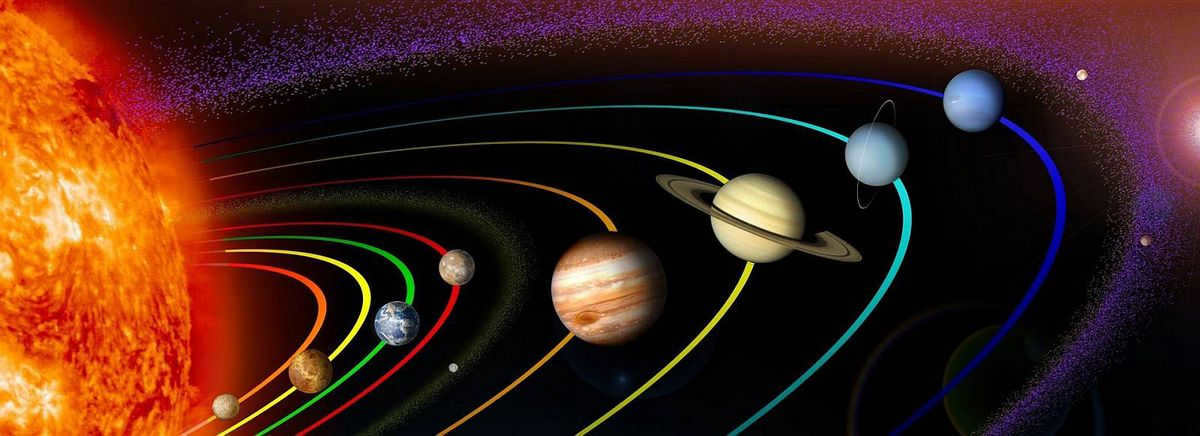
In the past, scientists came to the realization that our planet does not revolve around the Sun, but rather the opposite is true. This revolutionary idea was solidified by Nicolaus Copernicus, a Polish astronomer. He developed the heliocentric system, which convincingly demonstrated that the Earth is not the center of the universe. According to Copernicus, all the planets orbit around the Sun. The publication of his work, “On the Rotation of the Celestial Spheres,” took place in Nuremberg, Germany in 1543.
Prior to Copernicus.
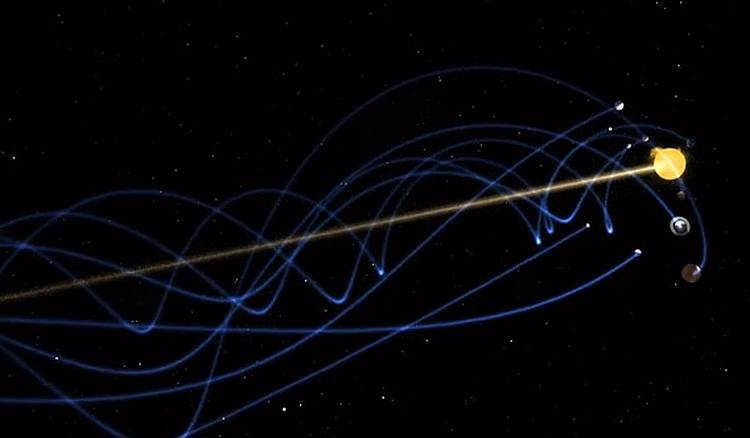
The path of planetary motion
In his treatise “The Great Mathematical Construction of Astronomy,” the ancient Greek astronomer Ptolemy proposed the initial arrangement of planets in the sky. He was the first to suggest that planets move in circular orbits. However, Ptolemy mistakenly believed that all planets, along with the Moon and Sun, revolve around the Earth. Until Copernicus’ groundbreaking work, his treatise was widely accepted in both the Arab and Western civilizations.
From Brahe to Kepler: A Journey through the Stars

Following the passing of Copernicus, the work he began was carried on by the Danish astronomer Tycho Brahe. Not only was Brahe a wealthy individual, but he also adorned his island with magnificent bronze circles, where he documented his findings regarding celestial bodies. The data collected by Brahe proved invaluable to the mathematician Johannes Kepler, who used it as a foundation for his own research. It was Kepler, a German scholar, who went on to organize the movements of the planets in the solar system and formulate his renowned set of three laws.
From Kepler to Newton
Kepler was the first to demonstrate that the Sun is orbited by the six known planets in elliptical rather than circular paths. The English scientist Isaac Newton furthered our understanding of elliptical orbits of celestial bodies with his groundbreaking discovery of the law of universal gravitation. His explanation of how the Moon influences Earth’s tides was widely accepted by the scientific community.
Revolve the Sun
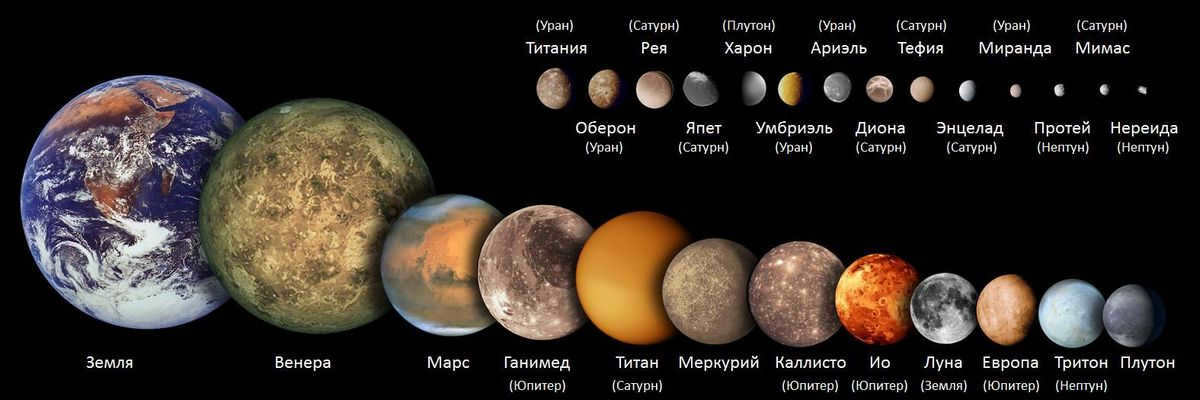
Comparative sizes of the largest moons of the solar system and the Earth-group planets.
The time it takes for the planets to complete a full orbit around the Sun naturally differs. For Mercury, the nearest to the star, it takes 88 Earth days. Our Earth completes its orbit in 365 days and 6 hours. The largest planet in the solar system, Jupiter, completes its revolution in 11.9 Earth years. And Pluto, the most distant planet from the Sun, has an orbit of 247.7 years.
It’s important to note that all the planets in our solar system are not orbiting the star directly, but rather the center of mass. At the same time, each planet is also rotating on its own axis and may have a slight wobble, similar to a spinning top. Additionally, the axis itself may have a slight shift.
Enjoyed this post? Share it with your friends!
Kepler’s Laws
The celestial bodies orbit the Sun in elongated elliptical paths, with the Sun positioned at one of the two focal points of the ellipse.
Equal areas are swept out by the line segment connecting the Sun and the celestial body in equal amounts of time.
The orbital periods of the celestial bodies around the Sun are proportional to the cubes of the major semi-axes of their orbits.
Johannes Kepler possessed a keen appreciation for beauty. Throughout his entire conscious existence, he dedicated himself to demonstrating that the solar system is a mystical masterpiece. Initially, he endeavored to establish a connection between its structure and the five regular polyhedra of classical ancient Greek geometry. (A regular polyhedron refers to a three-dimensional object in which all its faces are identical regular polygons.) During Kepler’s era, there were six known planets which were believed to be positioned on revolving “crystal spheres.” Kepler asserted that these spheres were arranged in such a manner that regular polyhedra fit perfectly between adjacent spheres. For instance, he positioned a cube inscribed within the outer sphere, which, in turn, inscribed the inner sphere, between the two outer spheres – Saturn and Jupiter. Similarly, between the spheres of Jupiter and Mars, he placed a tetrahedron (a regular tetrahedron), and so on.* Six planetary spheres, five regular polyhedra fitted in between them – one might think, sheer perfection?
Unfortunately, after comparing his model with the observed paths of the planets, Kepler had to acknowledge that the actual behavior of celestial bodies does not align with the narrow framework he had outlined. As the modern British biologist J. B. S. Haldane aptly remarked, “the concept of the universe as a geometrically flawless work of art turned out to be another beautiful hypothesis, shattered by unsightly facts”. The only remaining achievement of Kepler’s youthful enthusiasm was a handmade model of the solar system, which he gifted to his patron Duke Frederick von Württemburg. This exquisitely crafted metal creation featured separate hollow containers representing the orbital spheres of the planets and the regular polyhedrons embedded within them. These containers were intended to be filled with various beverages and served to the Duke’s guests during festive occasions.
It was only when Kepler relocated to Prague and took on the role of an assistant to the renowned Danish astronomer Tycho Brahe (1546-1601) that he encountered the ideas which ultimately cemented his legacy in the realms of science. Throughout his lifetime, Tycho Brahe diligently gathered astronomical observations and amassed an extensive trove of data concerning the movement of the planets. Following Brahe’s passing, this invaluable collection fell into the possession of Kepler. It is worth noting that these records held significant commercial worth at the time, as they could be utilized to create sophisticated astrological horoscopes (a field that contemporary scientists tend to disregard when discussing the early stages of astronomy).
The initial two laws concern the specificity of the orbital trajectories of an individual planet. Kepler’s third law enables us to compare the orbits of the planets among themselves. It declares that the greater the distance between a planet and the Sun, the more time it requires to complete a full revolution during its orbit, resulting in a longer “year” on that particular planet. Presently, we comprehend that this phenomenon is influenced by two factors. Firstly, the farther a planet is from the Sun, the greater the perimeter of its orbit. Secondly, as the distance from the Sun increases, the planet’s linear velocity decreases.
In Kepler’s laws, he presented the facts through the examination and summarization of observations. If one were to inquire about the factors causing the elliptical shape of orbits or the equivalence of sector areas, Kepler would not have been able to provide an answer. These conclusions were simply derived from his analysis. Similarly, if one were to inquire about the orbital motion of planets in other star systems, Kepler would have been at a loss for an answer. He would have needed to start anew – collecting observational data, analyzing them, and attempting to identify patterns. Therefore, Kepler would have had no grounds to believe that another planetary system adhered to the same laws as our solar system.
One of the remarkable achievements of Newton’s classical mechanics is its ability to provide a fundamental rationale for the laws formulated by Kepler and to affirm their universality. It has been shown that Kepler’s laws can be deduced from Newton’s laws of mechanics, Newton’s law of universal gravitation, and the principle of conservation of momentum using rigorous mathematical calculations. Consequently, we can confidently assert that Kepler’s laws are equally applicable to any planetary system in the cosmos. When astronomers explore new planetary systems in outer space (of which there are already a considerable number discovered), they routinely utilize Kepler’s equations to compute the orbital parameters of remote planets, even in the absence of direct observation.
Kepler’s Third Law has had and continues to have a significant impact on modern cosmology. When astrophysicists observe faraway galaxies, they can detect faint signals emitted by hydrogen atoms that orbit much further away from the galactic center than stars typically do. By analyzing the Doppler effect in the spectrum of this radiation, scientists can determine the rotational velocities of the outer hydrogen periphery of the galactic disk. These velocities, along with the angular velocities of galaxies as a whole (see also Dark Matter), provide valuable insights into the structure of the vast Universe. It’s remarkable that the work of this scientist, who laid the foundation for our understanding of the structure of our solar system, still holds such importance in the study of the Universe, even centuries after his death.
* Between Mars and Earth there is a dodecahedron (a twelve-sided shape), and between Earth and Venus there is an icosahedron (a twenty-sided shape). Between Venus and Mercury, there is an octahedron (an eight-sided shape). Kepler presented this structure in a detailed volumetric drawing in his first monograph “Cosmographic Mystery” (Mysteria Cosmographica, 1596) (see figure). – Translator’s note.
** Historically, Kepler’s laws (like the beginnings of thermodynamics) are numbered not based on the order of their discovery, but on the order of their comprehension in scientific circles. In reality, the first law was discovered in 1605 (published in 1609), the second in 1602 (published in 1609), and the third in 1618 (published in 1619). – Translator’s note.
Please be advised that in compliance with Federal Law N 273-FZ “On Education in the Russian Federation,” educational institutions are required to provide inclusive education for students with disabilities. This can be done through integration with other students, as well as through separate classes or groups specifically designed for students with disabilities.
Training in Communicative Pedagogy: Strategies for Interacting with Diverse Student Populations
Each participant will receive a certificate and discount for the training program.

Solar System Configuration
1. What type of paths do the planets follow?
a) circular; b) hyperbolic; c) elliptical; d) parabolic.
2. How do the orbital periods of the planets vary based on their distance from the Sun?
a) remain constant; b) decrease; c) increase.
3. The initial cosmic velocity is:
a) the velocity of movement in a circle relative to the center;
b) the velocity of movement along a parabola relative to the center;
c) circular velocity for the Earth’s surface;
d) parabolic velocity for the Earth’s surface.
4. When is the Earth, due to its annual orbital motion, closest to the Sun?
a) in summer; b) at perihelion; c) in winter; d) at aphelion.
5. The planets that are located below include:
a) Mercury, Venus, Mars; b) Jupiter, Uranus, Neptune;
c) Venus and Mars; d) Mercury and Venus.
6. The characteristic organizations of the planets in relation to the Sun, are known as….
a) conjunctions; b) configurations; c) elongations; d) quadratures.
7. When the angular distance of a planet from the Sun is 90 0 , the planet is in….
a) conjunction; b) configuration; c) elongation; d) quadrature.
8. The time period between two identical configurations of a planet is referred to as …
a) sideric period; b) synodic period.
9. According to Kepler’s second law:
a) each planet moves on an elliptical path with the Sun at one of its focal points;
b) The radius-vector of a planet describes equal areas in equal time intervals;
c) The cubes of the major semi-axes of the orbits of two planets are directly proportional to the squares of their sideric periods.
10. Newton’s third law, which refines Kepler’s law, is primarily used to determine ….
a) distance; b) period; c) mass; d) radius.
The arrangement of the solar system
1. In 1516, N. Copernicus justified the heliocentric system of the structure of the world, which is based on the following statement:
a) The sun and stars revolve around the Earth;
b) The planets move in a circular path in the sky;
c) The planets, including the Earth, revolve around the Sun;
d) The celestial sphere rotates around the Earth.
2. Which scientist discovered the laws of planetary motion?
a) Galileo; b) Copernicus; c) Kepler; d) Newton.
3. The horizontal parallax has increased. What happened to the distance to the planet?
a) It increased; b) It decreased; c) It did not change.
4. Which planets can be in opposition?
a) Lower planets; b) Upper planets; c) Mars only; d) Venus only.
5. The upper planets include:
a) Mercury, Venus, Mars; b) Jupiter, Uranus, Neptune;
c) Venus and Mars; d) Mercury and Venus.
6. What is the term for the angular distance of a planet from the Sun?
a) Conjunction; b) Configuration; c) Elongation; d) Quadrature.
7. What is the term for the interval of time during which a planet makes a complete revolution around the Sun in its orbit?
a) Sideric period; b) Synodic period.
8. At eastern elongation, in which direction is the inner planet visible?
a) West; b) East; c) North; d) South.
Kepler’s first law states that:
(a) each planet moves on an ellipse with the Sun at one of its foci;
(b) The planet’s radius vector describes equal areas for equal time intervals;
(c) The squares of the sidereal periods of two planets’ orbits are related to the cubes of the major semi-axes of their orbits.
10. The angle at which the Earth’s radius is seen from the celestial body is called ….
a) west elongation; b) east elongation;
c) horizontal parallax; d) vertical parallax.
Answers to the quiz on the structure of the solar system:
Looking for educators to join the Infoworks team
Online courses for teachers
Enhancing cognitive functions in children: helpful advice and educational activities for educators
Get certified and enjoy a discounted rate on your training
Discover a wide range of teaching resources by selecting your subject (category), grade level, textbook, and topic:
Access over 5,523,378 materials in our database
Additional resources
These courses might catch your attention:
Leave your thoughts
Log in to post comments.
Author of the content
- On the website: 9 months
- Followers: 0
- Total views: 4743
- Total content: 5
Moscow Institute of Professional
retraining and professional development
teacher training
We provide documents
that are in accordance with the approved template!
Teachers on the topic of the Unified State Exam: tips for effective preparation
Inspections have revealed violations of sanitary regulations in schools in several regions
Students in grades 7 to 11 in St. Petersburg have been transitioned to remote learning
Starting from January 28, all schools in Orenburg will switch to remote learning
Students in grades 1 to 8 in Stavropol have been transitioned to remote learning
All schools in the Nenets Autonomous Okrug have switched to remote learning
A complete transition to remote learning for all schools is not currently planned
Gift vouchers
The responsibility for resolving any disputes regarding the materials themselves and their content lies with the users who have posted the material on the website. However, the site administration is prepared to offer all possible assistance in resolving any issues related to the operation and content of the site. If you become aware of any unauthorized use of materials on this site, please notify the site administration through the feedback form.
All materials posted on the site are either created by the site authors or posted by site users and are provided on the site for informational purposes only. The copyrights for these materials belong to their respective legal authors. Partial or full copying of the site’s materials without the written permission of the site administration is strictly prohibited! The views of the site administration may not necessarily coincide with those of the authors.

The paths that the planets in our solar system follow as they orbit around the Sun are not visible to the naked eye. These paths, known as orbits, can vary in shape and size, which in turn affects the climate and surface temperature of the celestial bodies. So what exactly do these orbits look like, and how do they impact the planets and other objects in the solar system?
Perihelion, aphelion and eccentricity
Let’s explore the fundamental characteristics of the orbital path. All the planets in the solar system revolve around the Sun, following a specific trajectory. Along this path, each planet has points where it is closest and farthest from the central star. These points are known as perihelion and aphelion. The climatic conditions on each planet depend on the distances of these points from the Sun.
The perihelion and aphelion distances for the planets in our solar system are as follows:
- Mercury: 46 – 69.82 million kilometers;
- Venus: 107.5 – 109 million km;
- Earth: 147.1 – 152.1 million km;
- Mars: 206.7 – 249.2 million km;
- Jupiter: 740.7 – 816 million km;
- Saturn: 1.35 – 1.5 billion km;
- Uranus: 2.73 – 3.01 billion km;
- Neptune: 4.45 – 4.5 billion km.
Based on the given data, it can be observed that the disparity between the minimum and maximum distances from the Sun varies greatly among different planets. This discrepancy is closely tied to another crucial factor in describing a planet’s orbit – eccentricity.
Eccentricity refers to the shape of the trajectory that a planet follows. To determine this parameter, knowledge of the planet’s major and minor semi-axes of its orbit is necessary. Each type of orbital path corresponds to a unique numerical value of eccentricity:
- 0 – circle;
- 0 to 1 – ellipse;
- 1 – parabola;
- 1 to ∞ – hyperbola;
- ∞ – straight line.
All planets in the Solar System have elliptical-shaped orbits, with an eccentricity greater than zero. Among them, Venus and Neptune have orbits that are more compressed and circular in shape, while Mercury and Mars have more elongated orbits.
Duration of Planetary Revolution
The time taken for a celestial body to complete one full revolution along its orbit is known as its sideric rotation period, or “planetary year”. The length of this period is determined by the average radius of the orbit and the speed at which the planet completes its orbital rotation.
The factor responsible for the occurrence of seasons
The occurrence of seasons on the planets in the solar system is determined by the angle at which the axis of rotation is inclined to the orbit. When the angle is smaller, the weather on the celestial body remains more stable and there are no distinct seasons. On the other hand, celestial bodies with an inclination angle of more than 90° do not experience seasonality.
Objects with an axis inclination angle ranging from 20 to 30 degrees exhibit a change of seasons:
Despite its minimal axis tilt, Mercury still experiences “summer” and “winter” due to the high eccentricity of its orbit. The temperature difference between the perihelion and aphelion points on Mercury is as high as 620 degrees Celsius.
Therefore, the size and form of the trajectory that describes the object’s movement around the Sun greatly impact the creation of temperature conditions on it. The Earth’s motion with its low eccentricity and close distance, along with the ideal axis tilt angle, make its temperature ideal for the survival of living organisms.
The motion of the solar system
You may have come across a gif or viewed a video illustrating the movement of the solar system.
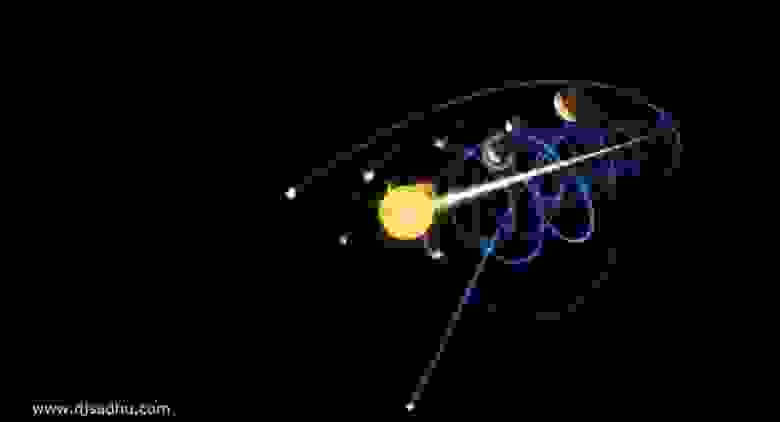
In 2012, a viral video caused quite a stir. I stumbled upon it shortly after its release, back when my knowledge of space was much more limited. What puzzled me the most was the perpendicularity of the planets’ orbits to the direction of motion. It’s not that it’s impossible, but the solar system can actually move at any angle to the plane of the Galaxy. You might wonder why we should remember long-forgotten stories. Well, the truth is that right now, if you want and the weather is good, anyone can observe the actual angle between the planes of the ecliptic and the Galaxy in the night sky.
Verify Researchers
According to astronomy, it has been determined that the inclination between the ecliptic and the Galaxy’s planes measures 63°.
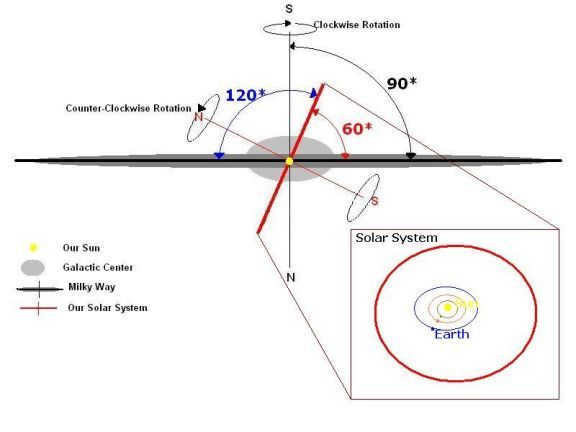
However, the depiction itself is uninteresting, and at this moment, while the supporters of the flat Earth are organizing a gathering outside the realm of science, we desire to possess a straightforward and comprehensible representation. Let us contemplate how we can observe the planes of the Galaxy and the ecliptic in the celestial sphere, preferably with the unaided eye without venturing far from the urban area? The plane of the Galaxy corresponds to the Milky Way, but presently, due to the excessive light pollution, it is not so effortless to perceive. Is there a line that approximately aligns with the plane of the Galaxy? Indeed, there is – it is the constellation of the Swan. It is distinctly visible even within the urban environment, and it is effortless to locate by relying on the prominent stars: Deneb (alpha Swan), Vega (alpha Lyra), and Altair (alpha Eagle). The “torso” of the Swan roughly coincides with the galactic plane.

Alright, so we’ve got a single plane. However, how can we establish a visual reference for the ecliptic? Let’s consider what the ecliptic actually is. By definition, the ecliptic is the intersection of the celestial sphere with the plane of the Earth-Moon barycenter’s orbit. Typically, the Sun is found on the ecliptic, but unfortunately, we don’t have two Suns to conveniently form a line, and the constellation of Swan won’t be visible in sunlight. Nevertheless, if we take into account that the planets of our solar system also move in a similar plane, it becomes clear that the planetary alignment can serve as our guide to the ecliptic. As of now, in the morning sky, we have the opportunity to observe Mars, Jupiter, and Saturn, all aligned in this parade of planets.

In the upcoming weeks, during the early hours before sunrise, you will have a remarkable opportunity to witness a captivating spectacle:


It is rather astonishing that this aligns flawlessly with the contents of astronomy literature.
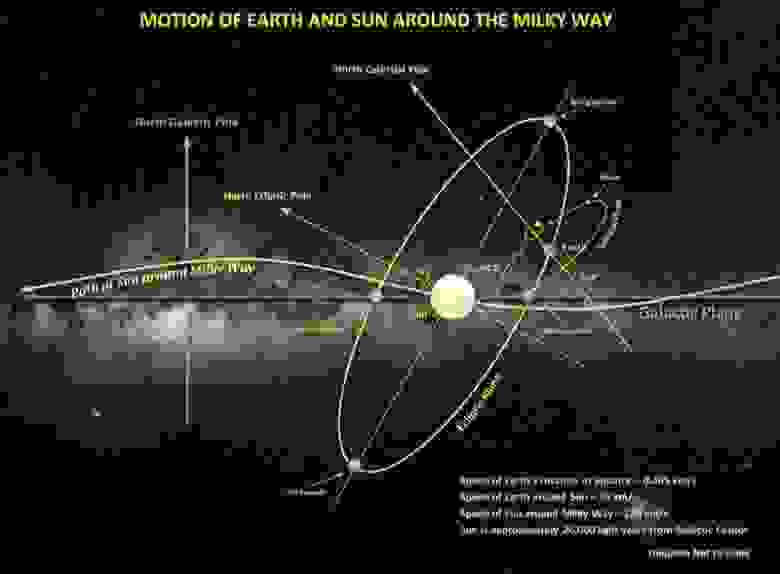
And the gif is more accurately depicted in this manner:
Source: astronomer Rhys Taylor’s website rhysy.net
The arrangement of the planes can prompt the query. Are we in flight
Astronomy
Ptolemy originally proposed the arrangement of the planets in the celestial sphere in his treatise “The Great Mathematical Construction on Astronomy.” According to Ptolemy, the celestial bodies move in circular paths, with the planets, including the Sun and the Moon, orbiting around the Earth. This theory was widely accepted in both Western and Arab civilizations until Copernicus introduced his heliocentric system.
Copernicus revolutionized our understanding of the solar system by proposing that the Earth is not the center of the universe. In his groundbreaking work “On the Rotation of the Heavenly Spheres,” published in 1543, Copernicus explained that the planets revolve around the Sun in their respective orbits.
After becoming a follower of Copernicus, the astronomer Tycho Brahe took to his own island and constructed large bronze circles to record his observations of celestial body movement. These observations eventually made their way into the hands of mathematician Johannes Kepler, who went on to establish the three laws of planetary motion.
The first law of planetary motion. Kepler initially worked with the assumption that the planets move in circular orbits. However, his calculations did not align perfectly with actual observations. As a result, Kepler hypothesized that the orbits are actually shaped like ellipses. Each ellipse-shaped orbit has two focal points, which are fixed points. Therefore, Kepler’s first law states:
The Second Law of Planetary Motion. In order to comprehend this law, it is imperative to trace a radius vector extending from the Sun to the planet. The celestial luminary must be situated at one of the focal points of the orbit. Over the same duration, this radius vector will traverse equal areas on the plane in which the planet’s motion around the Sun occurs.
The Third Law of Planetary Motion. Every single planetary orbit possesses a point in closest proximity to the Sun, known as the perihelion, as well as a point farthest away from the Sun, known as the aphelion. The segment connecting these two points is referred to as the major axis of the orbit. Dividing this segment in half yields the major semi-major axis, a parameter employed in the field of astronomy.
This law is utilized for calculating the duration of a year, which is the time period required for a planet to complete a full revolution around the Sun (T). To determine this value, the only information needed is the distance between the Sun and the planet (a).
In contemporary astronomy, there exist various forms of planetary motion:
Prior to delving into a more detailed exploration of each type of planetary motion within the Solar System, it is crucial to acknowledge that all planets are conventionally categorized as upper or lower, or inner and outer. The lower (inner) category encompasses Mercury and Venus, while the upper (outer) category encompasses all others (Mars, Jupiter, Saturn, Uranus, Neptune). This classification is based on their relation to the Earth’s orbit.
The inferior planets go through a phase change during their apparent movement, similar to the Moon. As they move, Mercury and Venus periodically find themselves between the Earth and the Sun, or behind the Sun. During this time, the planets are not visible as they are obscured by the Sun’s rays. The period when the inner planet is closest to the Earth is known as the inferior conjunction, while the superior conjunction is when the planet is farthest from the Earth. Depending on the position of the inner planet’s hemisphere illuminated by the Sun, it will appear differently from Earth. During the inferior conjunction, the planet will face Earth with its unlit side, making it invisible to observers. As it moves slightly away from this position, it starts to resemble a crescent shape. The larger the angular distance between the planet and the Sun, the larger the visible crescent. When the angle between the directions to the Earth and the Sun from the planet reaches 90 degrees, the observer can see exactly half of the illuminated side of the inner planet. The fully illuminated side of the planet is turned towards Earth during the superior conjunction, but it is still not visible due to the Sun’s glare. This is not the case for the superior planets, as they always appear with their illuminated side facing the observer from Earth. Suppose an observer on Earth moves to a point beyond Saturn’s orbit, they would then be able to observe phase changes on Earth, Mars, Jupiter, and Saturn. These planets would appear partially visible and partially invisible. It is not possible to see the phases of the planets from Earth using binoculars alone, as it would require additional equipment such as a telescope.
The motion of celestial bodies from west to east, in the same direction as the Sun, is referred to as direct motion of the planets.
The movement of celestial spheres in the opposite direction, from east to west, in relation to the stars in the sky, is known as retrograde or retrograde motion of the planets. In simpler terms, this direction is contrary to the motion of the Sun and Moon.
When studying the visible movement of the solar planets, we always consider the movement of the planet being observed and the Earth itself as it orbits around the Sun. According to Newton’s law of universal gravitation, the further a planet is from the Sun, the slower its orbital speed. This difference in speed leads to a phenomenon where the planet closer to the Sun “overtakes” the one further away during a moment of “confrontation”. Additionally, during retrograde motion, observers notice that planets move in loops as a result of the inclination of their orbits relative to the plane of the ecliptic. In other words, the backward motion of outer planets is not caused by them moving in the opposite direction, but rather because at certain moments, the Earth overtakes them due to its proximity to the Sun and its faster rate of rotation along its orbit.
Movement of the Sun along the ecliptic
Since ancient times, astronomers have observed that the Sun’s position at noon varies throughout the year. They also noticed that depending on the season, different constellations can be seen on the horizon from the southern side. For example, the constellations visible in summer are not visible at all in winter, and vice versa. These observations led to the discovery of the Sun’s annual motion relative to the stars, which is now known as the ecliptic.
The concept of the Sun’s motion is already known to be conditional. The apparent movement of the star is observed in relation to the Earth’s orbit around the Sun. The Earth completes a full rotation around its axis, which takes 23 hours, 56 minutes, and 4 seconds. As a result, the Sun appears to shift by 1° in the sky each day. The time it takes for the Sun to complete a full circle on the celestial sphere is known as a year, which consists of 365 days and 6 hours. Every fourth year is designated as a leap year to account for the extra time accumulated. Therefore, a leap year has one additional day, making it a total of 366 days.
Constellations of the Zodiac
As the Earth completes its orbit around the Sun, it passes through 13 constellations known as the zodiacal constellations. These constellations are located along the ecliptic line.
Put simply, the zodiacal constellations are the ones that lie along the path of the Sun as it moves along the ecliptic.
In modern astronomy, there are now 13 zodiacal constellations instead of the traditional 12. Each of these constellations has its own unique name, which has been associated with it for many years. Typically, the naming process involved choosing a name that had some resemblance to an object, animal, or image. Today, we are familiar with the names of these zodiacal constellations. They are as follows:
Each zodiacal constellation contains a multitude of brilliant stars. These stars played a crucial role in the division of the sky into distinct sections, with each constellation being assigned its own set of boundaries. Here are a handful of the most prominent stars. In the Gemini constellation, we have the shining stars Pollux, Alchena, and Castor. Scorpio boasts Sargas and Antares, while Sagittarius showcases Nunki and Kaus Australis. Leo, on the other hand, boasts the star Algieba, among others.
It is important to note that the modern boundaries of constellations were officially established in 1928 by the International Astronomical Union.
Referring to the ancient constellations, Aries was well-known in ancient Greece and is located in the Northern Hemisphere. This constellation is easily visible throughout Russia, particularly during the summer, fall, and winter seasons. According to legend, Aries is depicted as a magical ram with twisted horns, commonly known as the golden fleece. It is said that the Argonauts embarked on a journey to acquire this golden fleece, sailing on the ship called “Argo” along the coast of Colchis in Greek mythology.
Consisting of 57 stars that can be seen with the naked eye, Aries is the 39th largest constellation out of the 88 registered modern constellations. Notable bright stars within Aries include Hamal, Sheratan, Mezartim, and Botein.
The constellation is part of ancient lore and holds deep significance in many cultures. It is revered and cherished as a sacred animal. Taurus can be easily spotted across the entire country, and even without any instruments, one can observe the 216 stars that make up this constellation. Situated in the Northern Hemisphere, the best time to observe Taurus is during the months of November to January. Notable bright stars within Taurus include Aldebaran, Nat, and Alcyone. Aldebaran, in particular, is the 17th largest star in the sky.
Located in the Northern Hemisphere, the Gemini constellation features two prominent stars, Castor and Pollux, which are relatively close to each other. These stars symbolize the heads of twin brothers, with their feet pointing southwest along the Milky Way. Gemini is most easily seen during the months of December and January. With the naked eye, one can observe around 70 stars in this constellation, making it the 30th largest in terms of area.
Cancer is a constellation located in the Northern Hemisphere and is ranked 31st in terms of area. It is one of the oldest and least notable constellations. The optimal time for observing Cancer is during the months of January and February. The history behind this zodiacal constellation is quite fascinating. During his battle with the Lernaeus Hydra, the hero Heracles was also attacked by the sea Cancer. Despite the odds, Heracles emerged victorious against this villainous creature. However, the goddess Hera, who held a grudge against Heracles, decided to immortalize Cancer by placing it in the night sky. There are a total of 60 stars that can be observed in Cancer without the need for any instruments, but this can only be achieved on a clear night with minimal interference. Among these stars, Altarf and Akubens shine the brightest.
Located in the Northern Hemisphere, Leo is the twelfth largest constellation in terms of area. With the naked eye, one can spot a total of 70 stars in this constellation. The ideal months for observation are from February to March. The body of the Lion is represented by a trapezoid formation consisting of four bright stars, while its head is formed by an arc of stars. The brightest star in Leo is Regulus, which has a white-blue color.
On the other hand, Virgo is the largest constellation in terms of magnitude among the zodiacal constellations and ranks second among the 88 registered constellations. It can be found in the Southern Hemisphere and has the shape of a pentagon. The point of the autumnal equinox is located within Virgo. The best months for observing this constellation are March and April. Without the need for any instruments, one can see a total of 95 stars in Virgo. Notable stars in this constellation include Porrima, Spica, and the quasar #3C 273, which is among the brightest.
The constellation, which is positioned in the Southern Hemisphere and holds the 29th place in terms of its area, is easily recognizable in the night sky. Even without any specialized equipment, a total of 83 stars can be spotted. The optimal months for observing Libra are April and May. This stellar formation can only be fully observed in the central and southern regions of Russia. The origins of Libra are quite fascinating. It is said that this celestial body was brought to Earth by Astraea, the daughter of Zeus and the goddess Themis. While blindfolded, she held a pair of scales in her hands and endeavored to fairly evaluate human existence, identifying those who were dishonest, deceitful, or broke the law. In honor of his daughter, Zeus decided to immortalize this object in the form of the Libra constellation.
Located in the Southern Hemisphere, it is the 11th largest constellation in terms of area. Known for its dense grouping of stars, it boasts around 100 stars that can be seen without the need for optical instruments. This zodiacal constellation has had its name since ancient times. The Serpentine constellation features an image of the healer Asclepius, who possessed the gift of healing. Notable among its brightest stars are Ras Alhage and Sabic.
Situated in the Southern Hemisphere, this constellation holds the 15th spot in terms of size. A total of 115 stars in this constellation are visible to the naked eye. Some of the prominent stars in Sagittarius include Kaus Australis, Nunki, and Zeta Ascella. It is best observed in the southern regions of Rossi, with the months of July and August offering optimal viewing conditions.
The constellation is positioned in the Southern Hemisphere and is the 40th largest in terms of area. Without the aid of optical instruments, only 50 stars within the constellation are visible to the naked eye. It is particularly prominent in the southern and central regions of Russia. The most favorable time for observation is from July to August. Capricorn is a marvelous creature characterized by a goat’s body and a fish tail. A noteworthy feature within Capricorn is the presence of the globular cluster M30.
It is a constellation that dates back to ancient times and is one of the largest in the zodiac. It ranks 10th in terms of its size. There are a total of 90 stars that can be seen with the naked eye. Some of the brightest stars in Aquarius include Sadalsuud and Sadalmelik, Scut. The best time to observe this constellation is during the months of August and September. The most ideal location for viewing is in the central and southern parts of the country. In Greek mythology, Aquarius is associated with several characters, including Ganymede, Deucalion, and Kekrop. Ancient civilizations regarded Aquarius as a significant constellation, representing the divine being An, who brought life-giving moisture to the Earth.
The constellation is situated in the Northern Hemisphere and is ranked 14th in terms of its area. It is visible to the naked eye and contains a total of 75 stars. The best time to observe this constellation is during the early autumn months. It is considered to be a faint constellation and is made up of two parts, the Northern Fish (consisting of three stars) and the Western Fish (consisting of seven stars), which are connected by an imaginary line.
Astrologers, in contrast to astronomers, recognize only 12 zodiac signs. They create horoscopes for each sign, which people use daily and throughout the year. The time boundaries for astrological constellations are arbitrary and do not align with astronomical ones. Astrologers divided the entire ecliptic circle into 30-degree sections and established 12 Zodiac signs, each corresponding to a specific month of the year. However, the Serpent is not included in this list. In astronomy, the Sun is in the Scorpio constellation for 7 days, while in astrology, this period is extended to one month.
In ancient times, when telescopes had not yet been invented, and humans had not yet ventured into the skies, there was a limited understanding of space, stars, and celestial bodies. During this time, it was widely believed that the Earth was the center of the universe and remained stationary, while the Sun, Moon, and other celestial bodies, capable of changing their positions in the sky, revolved around it. This perspective led to a misconception about the movement of the planets, which was contrary to reality. Although there were occasional attempts to challenge this belief, they were unsuccessful due to a lack of supporting evidence at that time.
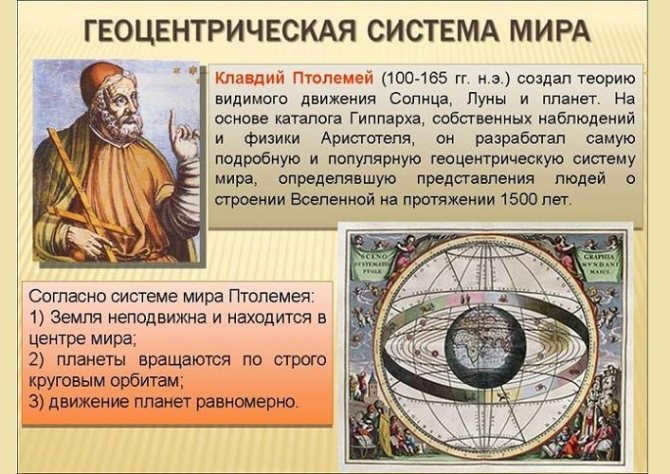
First conceptions and erroneous hypotheses
- In the 16th century, the Polish scholar Nicolaus Copernicus put forward a hypothesis proposing that the Earth rotates on its axis, completing one rotation in a day, and simultaneously orbits the Sun, completing one revolution in a year. There were some errors in his calculations, such as identifying the center of this system as the Earth’s orbit rather than the Sun. However, despite these mistakes, his theory served as a milestone in the development of accurate understanding of the solar system’s structure.
- The theory of Copernicus did not immediately attract attention, and it was only later that followers of his doctrine emerged who contributed new ideas and discoveries to it. In particular, the German astronomer Johannes Kepler calculated that the Sun was the center of the planetary system.
- Additionally, the Italian scientist Galileo Galilei, who is considered the founder of experimental physics, made significant contributions. Galileo Galilei was the first to utilize a telescope for observing celestial bodies and added numerous calculations to his theory. Unfortunately, these advancements led to his persecution by the Catholic Church. It is said that Galileo Galilei, who was sentenced to death, was compelled to renounce his discoveries, but before his passing, he exclaimed, “Still, it goes round!”
During that period, numerous alternative hypotheses were proposed. Specifically, one suggested that the planets orbit the Sun, but in addition to their orbit around the Sun, they also orbit the Earth. However, by the end of the 17th century, a century later, the majority of scientists reached a unanimous consensus that all the planets, including Earth, orbit the Sun counterclockwise, and this planetary rotation system was named the Solar System.
Thanks to this discovery, our understanding of celestial body rotation underwent a significant transformation.
https://youtu.be/M5aNqJxk5zE
Positions:
Europe’s Gaia mission, which is currently in progress, aims to accurately determine the positions of over one billion stars, primarily within our own galaxy. However, Gaia also collects data on the positions of stars in nearby galaxies,” says Davide Massari, an astronomer from the University of Groningen. “In fact, for certain stars in these neighboring galaxies, we also have data on their positions obtained by the Hubble Space Telescope approximately 12 years ago.”
Massari and his team at the Kapteyn Astronomical Institute made the decision to merge the two sets of data. This was a challenging endeavor due to the different methods of measuring location employed by the two missions. However, the team managed to combine the data by utilizing background galaxies that have remained unchanged for the past 12 years. Massari emphasizes the importance of carefully eliminating any potential systematic errors. Despite these challenges, the team succeeded in obtaining highly precise pairwise observations spanning a period of 15 years for 120 stars in the Sculptor Galaxy, as measured by both Hubble and Gaia.
The solar system: understanding the movement of the Sun and planets
As we gaze at the night sky, we are mesmerized by the countless shining stars that surround us. However, these stars represent just a fraction of the vast number that exists in the Universe. The sheer size of the Universe is beyond our comprehension, and the question of its existence is one that science has yet to fully answer. Many scientists lean towards the belief that the Universe is infinite, and our understanding of its size is limited to what we can observe through our most advanced telescopes and intricate calculations.
Ecliptic
The Sun and its movement
- The Sun’s age is approximately 5 billion years and it has been traveling around the galaxy at a velocity of around 270 kilometers per second. This speed allows the Sun to complete one full revolution around the center of the galaxy in approximately 226 million years. So, the last time the Sun occupied its current position in the Galaxy, dinosaurs roamed the Earth.
- However, the Sun’s movement is observed from various perspectives. One of these perspectives is based on the stars that are nearest to the Sun. It is believed that the Sun and the solar system are moving towards the constellation of Hercules along the ecliptic, which is a great circle on the celestial sphere. This movement takes place from west to east and completes a full revolution within a year.
- Furthermore, the Sun also rotates on its axis, completing a full revolution in 22.14 years. Similar to all the other planets in the solar system, it revolves around a common center of mass.
At noon, which is midway between sunrise and sunset, the Sun reaches its highest point. If you observe the shadow cast by a stick on a flat surface throughout the year, you will notice that the height of the shadow varies with the changing seasons!
Orientation and path of the Sun
The intersection of the celestial equator and the ecliptic plane
At two specific points on the ecliptic plane, known as the vernal and autumnal equinoxes, it intersects with the celestial equator. The vernal equinox is typically associated with the astrological sign Aries T, while the autumnal equinox is associated with the sign Libra -. On March 21 and September 23, respectively, the Sun is positioned at these points. During these days, day and night are equal in duration on Earth, with the Sun rising exactly in the east and setting in the west.
The vernal and autumnal equinoxes represent the intersection points of the equator and the ecliptic plane.
The solstices are the points on the ecliptic that are 90° away from the equinoxes. These points are also known as the solstice points. The highest position of the Sun relative to the celestial equator, known as the point of the summer solstice, is denoted by point E on the ecliptic. On the other hand, the lowest position of the Sun relative to the celestial equator, known as the point of the winter solstice, is denoted by point E’. The winter solstice is an important event.
On June 22, the Sun reaches its highest point in the sky, marking the summer solstice, while on December 22, it reaches its lowest point, known as the winter solstice. During the days surrounding these solstices, the Sun’s noon height remains relatively constant, which is why these points are named as such. The summer solstice brings the longest day and shortest night in the Northern Hemisphere, while the winter solstice brings the opposite.
During the summer solstice, the sunrise and sunset points are located farthest north on the horizon, while during the winter solstice, they are at their southernmost positions.
The Sun’s movement along the ecliptic results in continuous changes in its equatorial coordinates, daily fluctuations in noon altitude, and shifts in the sunrise and sunset positions on the horizon.
Understanding planetary motion and the structure of the solar system: the intricate dance of the planets around the Sun
The Sun, as the central powerhouse of energy and gravitational force, exerts its influence on the celestial bodies in its vicinity, guiding their mesmerizing orbits. These celestial bodies encompass a variety of entities:
- The planets that constitute the solar system
- The asteroid belt, a unique region teeming with space rocks
- The Koyler Belt and the Oort Cloud, two enigmatic realms at the edge of our cosmic neighborhood
There are a total of 8 planets in our solar system, situated at varying distances from the Sun and displaying different sizes. However, all of them rotate on their axis and orbit our star in the same direction, albeit in different orbits.
Pluto lost its status as a planet in 2006! There is a proposed addition to our solar system – Sedna, but it has not yet received official confirmation!
We also recommend reading our article titled “Order of the planets for kids in 4th grade: a brief characterization”, which discusses the arrangement of all the planets in our solar system.
Let’s now examine these planets in the order of their proximity to the Sun:
- Mercury – the smallest and closest planet to the Sun, completes a rotation in 88 Earth days.
- The Earth – spins on its axis in 24 hours and orbits the Sun in 365 days with a velocity of 29.765 kilometers per second.
- Mars – which has a nearly equivalent orbital period around the Sun as the Earth – 24 hours and 37 minutes.
- Jupiter – the colossal planet has the fastest rotation on its axis – 10 hours. However, it takes Jupiter 10 Earth years to orbit the Sun.
- Saturn – rotates on its axis in 10.7 hours and completes an orbit around the Sun in 29.5 Earth years.
- Uranus – orbits the Sun in 84 Earth years or 30,687 days.
- Neptune. – its complete revolution around the Sun takes 164.79 years, while it rotates on its axis in approximately 16 hours.
The movement of the planets around the Sun and the duration of their rotation.
- The asteroid belt, positioned between Mars and Jupiter, exhibits orbital motion around the Sun. Each celestial object within the belt has its own unique velocity, ranging from 3.5 to 6 Earth years, and all move in the same direction as the planets.
- The Koyler Belt, situated at the outer reaches of the solar system, consists of a collection of comets and dwarf planets. Similarly, the Oort cloud, composed of countless icy bodies, also adheres to the principles of gravitational force. Both of these regions rotate around the Sun with a period exceeding 200 years. Beyond these belts, the laws of gravity cease to govern and this expanse does not fall within the confines of the Solar System.
As we can observe, every detail in our lives and in the vast expanse of the Universe possesses its own significance and purpose, much like the orbits of planets and celestial bodies. It is as though they rely on one another, with our solar system revolving around the Sun, dictating their trajectories.
Orbits:
“We then proceeded to calculate the movement of stars within this particular galaxy, which is measured by the anisotropy parameter,” explains Massari. If the parameter is high, the stars follow elongated paths, whereas if it is very small, they orbit in a circular manner. “By understanding this, we can deduce the characteristics of the dark matter halo gas that surrounds the galaxy. However, our observed value was incredibly surprising as it contradicted the predictions of standard models.” This suggests that some of the assumptions on which these models are founded may be incorrect.
“Up until this point, our testing of models has been limited to line-of-sight motion. This approach appeared sufficient, but now, with the introduction of new motion patterns, the standard models are no longer effective,” Massari explains. “One possible explanation for this discrepancy is that the models assume all stars belong to a single population.” However, we are aware that Sculptor is a complex system with at least two distinct stellar populations (one compact and one extended). There exists a model that takes this into account and accurately predicts the observed anisotropy reported by Massari and his colleagues, as the majority of the measured stars belong to the more compact population.”
Dark matter:
The movement of stars is primarily influenced by unseen dark matter surrounding the galaxy. This is why it’s crucial to ascertain the anisotropy parameter as it can be employed to determine the distribution of dark matter within this galaxy, which in turn relies on the characteristics of the dark matter itself. Massari: “Our findings demonstrate that by utilizing Gaia data alongside other datasets, we can calculate the accurate motion of stars beyond the Milky Way, thereby enhancing models that depict the distribution of dark matter in these alternate galaxies.”
The second important outcome is a more precise determination of the orbit of the Sculptor Galaxy around the Milky Way. “The extent of this orbit is greater than anticipated. It was previously believed that the current spherical shape of the Sculptor Galaxy was partially due to some close encounters, but our measurements indicate that this is not true.” Massari and the team at the Kapteyn Institute are excited to expand their collection of stars beyond the Milky Way with documented proper motion once new data from Gaia becomes available early next year.
PLEASE MAKE SURE TO SHARE THIS ARTICLE:
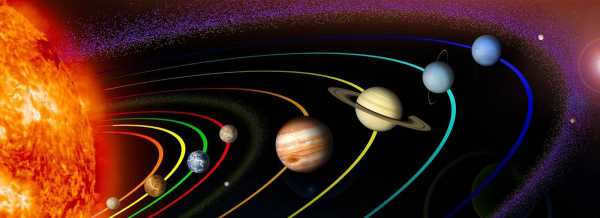
During ancient times, scientists began to understand that our planet does not revolve around the Sun, but rather the opposite. This groundbreaking revelation was brought to light by Nicolaus Copernicus, a Polish astronomer. Copernicus formulated his heliocentric system, which convincingly demonstrated that the Earth is not the center of the Universe. According to his theory, all the planets orbit around the Sun. In 1543, Copernicus’ influential work “On the Rotation of the Celestial Spheres” was published in Nuremberg, Germany.
Prior to Copernicus.
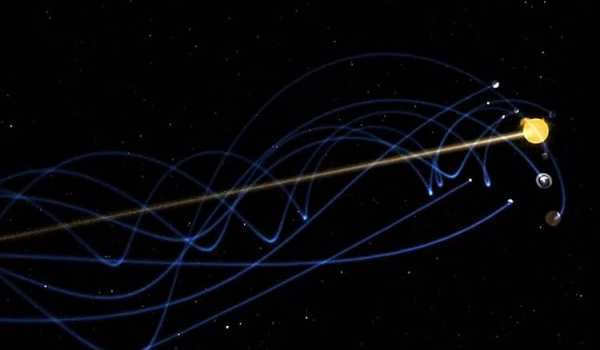
The path of movement in the vast expanse of space
Ptolemy, an ancient Greek astronomer, was the original proponent of the planetary arrangement in the celestial sphere in his work “The Great Mathematical Construction of Astronomy”. He was the first to propose that they traverse their orbits in circular paths. However, Ptolemy mistakenly believed that all the planets, including the Moon and the Sun, revolve around the Earth. Until Copernicus’ groundbreaking discoveries, his treatise was widely accepted in both the Arab and Western civilizations.
From Brahe to Kepler: A Journey Through the Ages of Astronomy

Following Copernicus’ demise, the Danish scientist Tycho Brahe took up his work. Brahe, a man of considerable means, outfitted an island he owned with magnificent bronze instruments on which he recorded his observations of celestial objects. Brahe’s findings proved invaluable to the mathematician Johannes Kepler in his investigations. It was Kepler, a German, who organized the movements of the planets in the solar system and formulated his renowned three laws.
From Kepler to Newton
Kepler was the first to demonstrate that all six planets known during his time orbit the Sun not in circular paths, but in elliptical paths. Isaac Newton, an English scientist, further expanded humanity’s understanding of celestial bodies’ elliptical orbits when he discovered the law of universal gravitation. His explanation, which provided convincing evidence that the Moon influences Earth’s tides, was widely accepted by the scientific community.
Orbiting the Sun
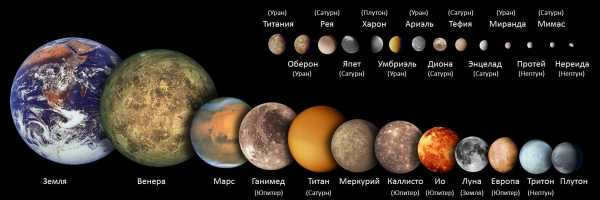
The sizes of the biggest moons in the solar system and the planets of the Earth’s group are compared.
The time it takes for the planets to complete a full orbit around the Sun naturally varies. In the case of Mercury, which is the closest planet to the star, it takes 88 Earth days. Our planet, Earth, completes its orbit in 365 days and 6 hours. Jupiter, the largest planet in the solar system, completes its revolution in 11.9 Earth years. Pluto, the most distant planet from the Sun, has an orbit of 247.7 years.





